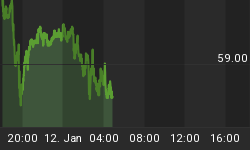The Fed's Beige Book, a summary of economic activity in 12 Fed regions, claims modest wage increases broadened, manufacturing expanded, and light vehicle sales strengthened.
Let's investigate those claims in detail, emphasis mine, then do a reality check on those ideas.
Overall Economic Activity
Economic activity increased in each of the twelve Federal Reserve Districts between mid-February and the end of March, with the pace of expansion equally split between modest and moderate. In addition, the pickup was evident to varying degrees across economic sectors. Manufacturing continued to expand at a modest to moderate pace, although growth in freight shipments slowed slightly. Consumer spending varied as reports of stronger light vehicle sales were accompanied by somewhat softer readings in non-auto retail spending.
Employment and Wages
Employment expanded across the nation and increases ranged from modest to moderate during this period. Labor markets remained tight, and employers in most Districts had more difficulty filling low-skilled positions, although labor demand was stronger for higher skilled workers. Modest wage increases broadened, and reports noted bigger increases for workers with skills that are in short supply.
Prices
On balance, prices rose modestly since the previous report. Input prices generally increased at a modest rate and outpaced gains in selling prices, which rose only slightly.
Manufacturing Expansion?

The curious thing about these numbers is the Beige Book and Industrial Production reports both come from the Fed!
Stregthening Light Vehicle Sales?
On April 3, I reported March Auto Sales Final Numbers: Down 5.7%, Two-Year Low; Don't Worry, It's Just a Plateau!

Also on April 3, I reported Auto Inventories Highest Since July 2009: Concerns Mount, Ford Vehicle Sales Decline 7.2%, GM Up 1.6%
Somewhat Softer Readings in Non-Auto Retail Spending?
The fact of the matter is Retail Sales Unexpectedly Decline, Revisions Even Worse. Here is a snip from Econoday.
Highlights
First-quarter consumer spending is in trouble. Retail sales fell 0.2 percent in March which is under the Econoday consensus for no change. Importantly, February sales are revised sharply lower, to minus 0.3 percent vs an initial gain of 0.1 percent.
Vehicle sales round out the quarter with a 3rd straight sharp decline at minus 1.2 percent. Sales at gasoline stations, due to lower prices, fell 1.0 percent. But when excluding both vehicles and gasoline, sales could only manage — despite sky-high consumer confidence — a second straight 0.1 percent increase.
Other areas of weakness include sporting goods which fell 0.8 percent and furniture stores which were down 0.3 percent. And two special areas of weakness are restaurants which fell 0.6 percent for a second straight decline and building materials which fell 1.5 percent.
Modest Wage Increases Broadened?
That claim is arguably true on the surface, but if one factors in price inflation, wage growth is nonexistent since August of 1971.

Flashback 1971
1971 is an interesting year, at least for me. That's when I graduated from Schlarman High School in Danville, Illinois.
Tuition at the university of Illinois for a degree in Civil Engineering was $250 a semester. It's now $17,628 a year, $8814 per semester.
I helped finance my way through college working at grocery stores and playing poker against farmers in Perrysville and Cayuga Indiana. $100 was a huge win. I did not always win, but I usually did.
Taking into consideration losses (I was never willing to lose more than $20), I suspect I averaged $40 in the plus column per session. At the then going average wage of $3.66, $40 was about 11 hours of normal work.  At the fast food wage of $1.70 per hour that was about 23 hours of work.
Thank the Fed!
Many of you don't believe the stated inflation rate. I don't either. But it is especially wrong for those attempting to put themselves through school and those who wish to buy a new home.
The Fed and government meddling via student loan programs and affordable housing programs have crucified students and home buyers via an explicit policy of inflation, the Fed clearly does not know how to measure.
As a side note, this is likely one of the most ridiculous Beige Book assessments in history.
Economic Challenge to Keynesians
Of all the widely believed but patently false economic beliefs is the absurd notion that falling consumer prices are bad for the economy and something must be done about them.
I have commented on this many times and have been vindicated not only by sound economic theory but also by actual historical examples.
My article Deflation Bonanza! (And the Fool's Mission to Stop It) has a good synopsis.
And my Challenge to Keynesians "Prove Rising Prices Provide an Overall Economic Benefit" has gone unanswered.
There is no answer because history and logic both show that concerns over consumer price deflation are seriously misplaced.
The BIS did a study and found routine deflation was not any problem at all.
"Deflation may actually boost output. Lower prices increase real incomes and wealth. And they may also make export goods more competitive," stated the BIS study.
It's asset bubble deflation that is damaging.
And in central banks' seriously misguided attempts to fight routine consumer price deflation, central bankers create very destructive asset bubbles that eventually collapse.
When those bubble burst, and they will, it will trigger debt deflation, which is what central banks ought to fear.
For a discussion of the BIS study, please see Historical Perspective on CPI Deflations: How Damaging are They?
Lower Prices Increase Real Incomes!
Read that line over and over and over again until it sinks in.
The Fed does not want lower prices. Banks and the already wealthy are the beneficiaries.
Many Students and new home buyers have been made debt slaves in the process.
Â

















